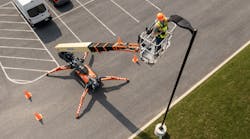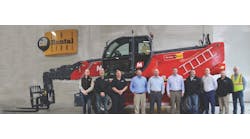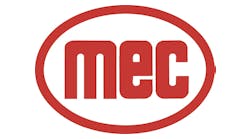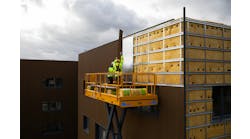Shashank Bhatia, vice president of engineering, JLG, discusses the company’s new products, advances in battery technology and charging infrastructure, global demand and improved supply chain, and more.
RER: What new equipment enhancements or developments has your company come up with in the past year?
Bhatia: Understanding the demands and challenges rental customers face on work sites day after day, JLG recently introduced its E18 vertical mast lifts, the SkyTrak 6034 and 6042 telehandlers, as well as the X660SJ compact crawler boom lift to the North American rental market. These new products are equipped with features and capabilities directly inspired by the needs of those who use them.
Here’s a little bit more about how rental customers can benefit from these new products:
The all-new JLG vertical mast lift series includes the E18MCL and E18MML models. The E18MCL is well-suited for construction and industrial applications that require outdoor and indoor capable machines. The E18MML model is ideal for indoor finish work and general maintenance work. The “E” in these models’ nomenclature stands for “Electric” for these machines’ modern DC electric drive system. Both E18 models are equipped with long-running batteries, which offer two times more duty cycles than the market-leading competitive machines.
JLG is in the process of redesigning its popular SkyTrak telehandler line, starting with the all-new 6034 and 6042 models. Featuring a redesigned build, reworked functionality, reimagined technology and refocused serviceability, these 6,000-pound maximum lift capacity telehandlers are ideal for pick-and-place applications, such as handling, loading and unloading bulk materials on demanding residential, commercial, urban and suburban job sites across America.
JLG’s first straight-jib (SJ) compact crawler boom lift, the X660SJ, has 65 feet, 7 inches of platform height, 500 pounds of capacity for up to two workers, and 39 feet of horizontal reach and indoor/outdoor versatility. This model is ideal for a wide range of applications, including arboriculture, painting, general maintenance, electrical, HVAC, and window washing on a variety of job sites such as auditoriums, arenas, atriums, and outdoor structures.
We also just introduced our new ClearSky Smart Fleet IoT (Internet of Things) platform to help rental companies manage their fleets by digitizing daily processes, streamlining logistics, and gaining actionable, on-demand machine insights. This breakthrough IoT technology launches with 25 unique features, including analyzers, telematics and productivity applications into a single connectivity beacon on JLG machines for seamless back-and-forth interaction through a comprehensive mobile app, a user-friendly web portal or an advanced API. Equipment owners and operators can send a prompt to the beacon to identify a machine’s status or perform diagnostics wirelessly through the mobile app.
Obviously, the trend towards electrification of equipment has accelerated in the past year. Are you finding greater interest and acceptance among your rental company customers? How about among end users?
Bhatia: The technology and cost of components involved in the electrification of equipment have advanced in a positive direction in recent years, leading to greater interest and acceptance within the entire ecosystem — from the end users and rental companies through to manufacturers and suppliers.
For end users, demand for electrified machines is accelerating due to two major benefits of this type of equipment: Zero emissions and low noise operation.
As end users are more frequently requesting electric models for projects, this has grown the demand within the market for more electrified products in rental fleets.
For rental company customers, in addition to meeting the customers’ preferences for electric machines, the benefits of having electrified equipment in their fleets are simplified machine servicing due to fewer components to maintain and the socio-economic responsibility of attaining ESG (environmental, social and corporate governance) targets.
Continuing on the topic of electrification and battery-powered equipment, there is still a perception among many that they don’t perform as well as diesel-powered machines. Any thoughts on that?
Bhatia: With the advances in battery technology over the years, today’s battery-powered electric equipment has the torque and power needed to meet the same functional requirements, like drive speed and lift speed at similar platform capacities, that diesel-powered machines today do.
That said, this lingering perception in the industry is likely being driven by the runtime of the machines and the state of the charging infrastructure. Electric equipment requires both a) access to electricity for charging due to its limited runtime and b) sufficient charging time between work shifts to reach a full state of charge.
Has the charging infrastructure improved for electric equipment on job sites?
Bhatia: As battery technology has advanced, so has the charging infrastructure and it continues to improve as manufacturers leverage developments in other industries, like automotive, to bring solutions to the rental industry. This crossover will be more evident in higher-voltage equipment (> 350V) where the charging infrastructure and fast-charging capabilities solve the longer charging time concerns.
For lower-voltage equipment, like in some of the MEWPs (mobile elevating work platforms like boom lifts, scissor lifts, etc.), the requirements for charging the equipment will be around leveraging the existing single-phase/3-phase power at 110V architecture (because it’s the most developed), along with other solutions like improving the battery management systems and developing portable energy power solutions (e-generators) that can be brought to the equipment to charge it.
Other than this, further enhancements in lithium-ion battery technology and other battery chemistries will give the opportunity to integrate longer-lasting, quick-charging batteries into rental equipment, which will help to balance the limitations of the charging infrastructure.
It appears that the coming year should be strong for aerial equipment sales. Do you expect to see a lot of opportunities in infrastructure spending? Increased industrial and/or non-residential work? An onshoring trend in North America?
Bhatia: Across the board, the industry continues to be very healthy, and specific to the rental market, there is a significant demand globally for access equipment right now, largely due to the recent uptick in infrastructure spending around the world and ongoing fleet replacement activities.
In the U.S. specifically, the onshoring trend is driving the momentum for mega-construction projects ($5+ billion investments each). Thanks to the three different infrastructure bills passed by Congress, significant capital expenditures are being made right now to build plants to produce batteries, semiconductor chips and LNG, as well as to construct new refineries and industrial facilities.
Are the supply chain issues still a major problem for your company and are lead times still long or are things more normal?
Bhatia: We continue to see positive momentum with the ongoing supply chain constraints. Lead times are improving as materials and components become more readily available.
To balance the challenges JLG has experienced due to shortages, we have worked diligently internally to maintain supply and satisfy the market demand, while also creating many new efficiencies across our operations to minimize the impact on our customers.
Any there other trends in aerial equipment you expect to see in the near future?
Bhatia: As demand continues to grow for electrified equipment on job sites, one of the biggest trends we’ll see soon is more electric MEWP and telehandler models introduced in the market. This will also drive the development of charging infrastructure solutions, like portable charging solutions for lower-voltage equipment. We also anticipate that sustainable, eco-friendly options will become more readily available.
Another trend we expect is telehandler lines continuing to expand in the sub-compact size class as there continues to be more need in the market for models under 5,000 pounds.
Connectivity, software as a service (SaaS), and digital products are also growing at a rapid pace. Historically, the construction industry has lagged behind other industries in adopting these technologies, but it is starting to catch up, and particularly in the aerial market, we see evidence that adoption is accelerating significantly faster and will continue to do so.






